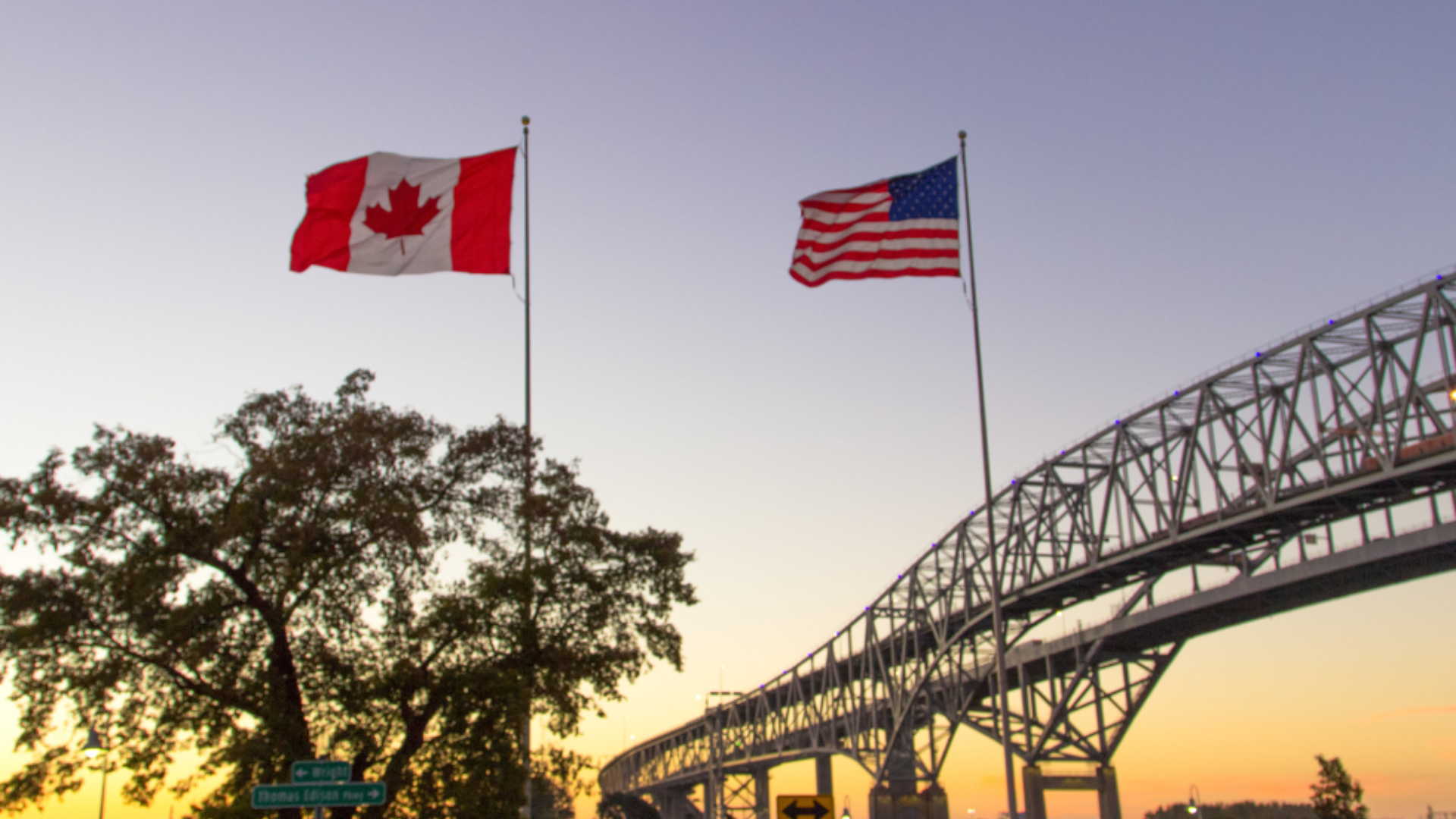FINANCE AND BUSINESS ECONOMICS RESEARCH STAFF
Ambient Dread and a Weird Gold Rush: Will Huggins on Tough Times Ahead
October 27, 2023 ·
Contributed by: Matt Innes-Leroux

The Bank of Canada held interest rates at 5 per cent Wednesday, the second straight month with no increase, signalling the bank may be done with rate hikes as they grapple with inflation.
Canada’s annual inflation rate fell to 3.8 per cent in September, but the impact of tough economic times can be seen job cuts in the financial industry, pressure on mortgage holders, a cooling cottage real-estate market, and the beginning of a gold rush in Costco stores.
William Huggins, assistant professor of Finance and Business Economics at the DeGroote School of Business, shares insights on the state of the Canadian economy and the turbulent times ahead.
Last week we saw big financial services institutions announce layoffs. Are the banks taking steps like this a sign of tougher times ahead?
In my opinion, this is the third chapter of a story that started with the pandemic.
Chapter 1, when the pandemic started governments around the world needed to make sure that people could still pay for food and rent without disrupting the financial system and that meant spending a ton of extra money. That helped set off inflation because there was more money in the system. Couple that with disruptions to supply chains in multiple industries, and consumers saw prices pushed up in response.
We knew what was coming in Chapter 2, because it was straight out of the orthodox central banker’s playbook: You raise interest rates to try and cool inflation but that takes time to work.
Which brings us to where we are now in Chapter 3: Looming recession.
We’ve been seeing an increase of news about homeowners struggling with mortgage hikes, and people living paycheque-to-paycheque, for some time now and that’s having an impact on overall demand in the economy. The question we should be asking isn’t “Are we going to enter a recession”; it’s “How bad is this recession going to be?”
The banks are cutting jobs because they’re worrying about future demand for loans and whether they oversized their loan portfolios during the pandemic. They’ve made increasing provisions for bad loans as well, a sure sign they expect conditions to worsen for households and businesses alike. They’re expecting a broad demand slowdown and have been since inflation took off and central banks started acting.
Inflation slowed to a lower than expected 3.8 per cent according to last week’s Statistics Canada update. Is inflation stabilizing something that can happen without a recession?
I think that’s a bit of a fantasy to say inflation has meaningfully come down since last month. The big improvements happened over the summer before it popped back up to 4 per cent in August.
A lot of people whose budgets are stressed right now want to see signs of relief or that interest rates could be going down, but for the average consumer there isn’t much of a difference between 4 per cent inflation and 3.8 per cent inflation. It’s almost like nothing’s changed.
The broad trend is that inflationary pressures are going in the direction we want – down. Supply chain issues are working their way out, and the excess money from the pandemic spending is working its way out of the system.
But I don’t think we’re going to suddenly pop back to 2 per cent inflation anytime soon. The inflation rate is still about double the policy target, so there’s more interest rate medicine to come. I don’t think we’re going to see interest rates coming down for at least six to nine months, provided nothing else goes wrong.
However, if inflation pops up again, the Bank of Canada will likely raise rates again. That’s really the only solution that central banks can apply to inflation, to undermine aggregate demand by raising the cost of borrowing. There’s nothing they can do to increase supply.
Ideally, we’re going to need coordination between the government and central bank, as both fiscal and monetary policies must be balanced to get inflation under control.
There’s been a lot of attention directed towards warehouse retailer Costco recently since they’ve begun selling one-ounce gold bars priced at $2,679, and have reported they’re selling well. Are people buying gold at Costco making a sensible investment?
There are better ways to own gold than paying to get a gold bar from Costco, keeping it in your house and insuring it or paying for a safe deposit box. All commodities have storage and security costs, from grain to gasoline, and gold from the store is no different.
In the modern world, a better way to own gold for investment purposes is to have a company manage custody services for you. There’s a variety of them who certify the asset, insure it, and store it in a common vault that’s more secure than your home.
Costco may be selling the bars for marginally cheaper than you could buy one from a bank, but how do you access the market and get a fair price for gold when you want to sell it? If you’re on your own, you’ll have to go to a broker or a jeweler, who will charge fees.
If your goal is to own some assets that appreciate and have low holding costs, its important to realize that buying a gold bar from Costco has a lot of costs and doesn’t produce an offsetting yield. Gold is a volatile, non-yielding speculative asset, but it’s often treated like it has economically magical properties.
What is it that you think about this time that has people putting their blinders on to straightforward reasons why it’s not a good investment?
People are afraid that things are starting to look weird economically and they’re noticing that the economic models we’ve been using for the last few decades are producing some unexpected side-effects. As central banks try to control some problems like a recession, another issue — like a housing bubble — gets created.
When interest rates were cut really low following the 2008 crash, we didn’t appreciate the risk that it was going to set off a speculative bubble in every asset class you could leverage, including housing. It created automatic gains for anyone who had enough money to borrow for a house, and losses for anyone who was renting.
This dynamic wasn’t forecast by policy makers, but its implications helped to create today’s environment of widening inequality and unaffordable shelter.
In hard times people are inclined to reach for safety, but traditional safety in banks and bonds has come with a suppressed yield for most of the last 15 years. So they were instead pushed into risky assets, just to keep up with inflation. That manifests as speculation in real estate, NFTs and cryptocurrencies, classic cars, art and — of course — reddit-touted meme stocks.
Historically, in Canada, the industry benchmark for a mortgage was that lenders would not lend out more than three times, maybe four times your annual income. In the past decade we’ve moved that range into five, almost 10 times the income.
The inherited economic wisdom of prior generations isn’t paying off anymore and people don’t know what to do in response.
That sort of ambient dread helps drive people to pick up all kinds of speculative assets, just in case.
There was a rush on cottage and rural properties during the pandemic, but now resale prices are dropping. Why are owners trying to unload these properties?
It’s a symptom of interest rates bouncing back to normal.
When mortgage rates were super low, around 2.5 or 3 per cent, people saw investing in more property as the advantageous choice, but when rates climbed back up it spelled doomsday for marginal buyers who could just afford their dreams.
But faced with rising mortgage costs and the choice of losing the house or the cottage, selling the cottage isn’t a hard decision. It wouldn’t surprise me if we see other kinds of leverageable purchases being sold off as household budgets tighten.
That sounds like things are just starting to get underway
Yes, we are part-way through a lengthy drama that will take some time to complete. To understand consumer behaviour during this period, consider that about one-third of households in Canada have no access to credit, one-third has no debt, and the last third has both.
The aggregate demand from the poor instead really affected by interest rate increases and their consumption patterns are fairly stable. Inflation is their No. 1 enemy. The rich aren’t in debt, so their consumption isn’t really affected either.
It’s the middle third that has mortgages and credit card debt who is bearing the cost of higher rates.
That sort of economic stress can have knock on effects into politics as people begin to doubt that the system works for them. Governments, companies, and the public all got used to the low interest rate world and the transition back to “normal” has been very jarring for some.
I think we’re just beginning to see the changes that will result from positive real interest rates.
The Bank of Canada’s leaders know what they’re doing. Tiff Macklem and other central bankers around the world are under a lot of political pressure right now, but it’s important for Canadians to remember that there are no painless policy choices at this point.
[dsb_author_profiles]















